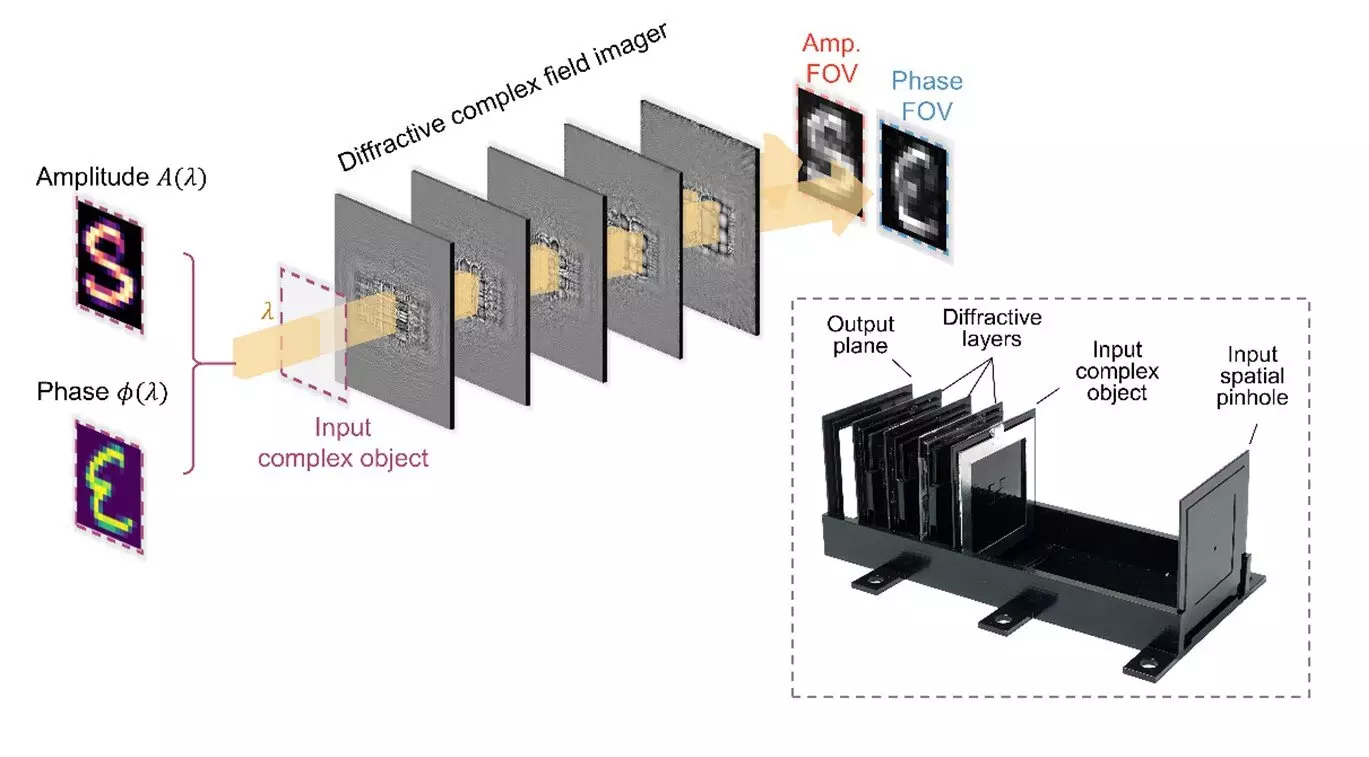The University of California, Los Angeles (UCLA) has made a groundbreaking achievement in the field of optical imaging technology. Researchers at UCLA have developed an all-optical complex field imager that has the capability to capture both the amplitude and phase information of optical fields without the need for digital processing. This advancement is poised to revolutionize multiple industries such as biomedical imaging, security, sensing, and material science.
Traditional optical imaging technologies have relied on intensity-based sensors that can only capture the amplitude of light, neglecting the crucial phase information. Phase information is essential for understanding structural properties such as absorption and refractive index distributions. Previous methods of capturing phase information involved complex interferometric or holographic systems accompanied by iterative phase retrieval algorithms, resulting in increased hardware complexity and computational demand.
Led by Professor Aydogan Ozcan, the team at UCLA has developed a novel complex field imager that eliminates the need for digital reconstruction algorithms. This innovative device utilizes deep learning-optimized diffractive surfaces to modulate incoming complex fields. These surfaces create two independent imaging channels that convert the amplitude and phase of the input fields into intensity distributions on the sensor plane. This approach simplifies the imaging process significantly, reducing the complexity of hardware and computational requirements.
The new complex field imager consists of spatially engineered diffractive surfaces that perform amplitude-to-amplitude and phase-to-intensity transformations. These transformations enable the device to directly measure the amplitude and phase profiles of input complex fields. The compact optical design of the imager allows it to be integrated into existing optical systems with ease. The researchers validated their designs through 3D-printed prototypes operating in the terahertz spectrum, demonstrating a high degree of accuracy in the output images.
Potential Real-World Applications
The implications of this breakthrough in complex field imaging technology are vast. In the biomedical field, the imager can be utilized for real-time, non-invasive imaging of tissues and cells during medical procedures. Its compact design makes it suitable for integration into endoscopic devices and miniature microscopes, potentially advancing point-of-care diagnostics and intraoperative imaging. In environmental monitoring, the imager can aid in the development of portable lab-on-a-chip sensors for rapid detection of microorganisms and pollutants, streamlining environmental assessment processes.
The complex field imager also holds promise for industrial applications, enabling rapid inspection of materials without the need for bulky equipment or extensive computational resources. Its ability to capture detailed structural information makes it a valuable tool for quality control and material analysis in various industries.
The development of the all-optical complex field imager represents a significant advancement in the field of optical imaging. By directly capturing amplitude and phase information without digital processing, this technology simplifies the imaging process and expands the possibilities for applications across different sectors. As researchers continue to refine and enhance the capabilities of this innovative device, the impact of this breakthrough is expected to grow, offering new avenues for scientific research and practical applications.


Leave a Reply